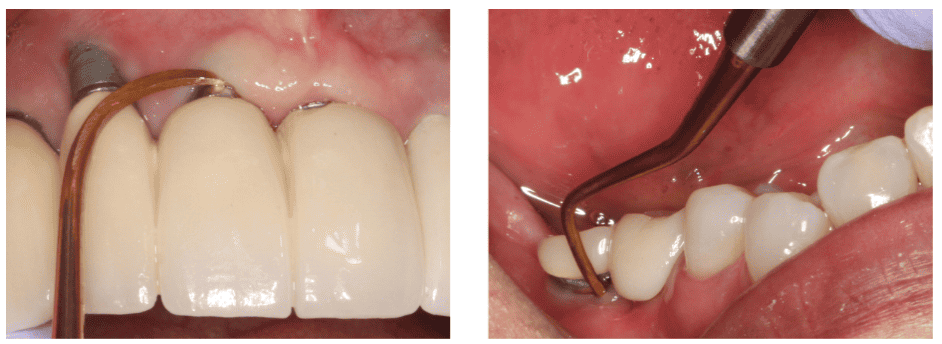Editor’s intro: The DenMat implant maintenance kit offers a comprehensive set of instruments that allows for versatile, safe, and effective access around implants.
Dr. Timothy Kosinski discusses tools that provide safe and efficient access around dental implants

The option to restore patient health, function, and esthetics with dental implants has become an integral part of dental practices. The surgical and prosthetic applications have become rather routine, and long- term prognoses have improved with CBCT diagnosis and planning. Taking a “tooth-down” approach ensures that the dental implants are not only placed in available hard tissue, but also ideally positioned to maximize the final esthetic and functional result. There are many factors to consider when an implant does not heal as expected. The patient’s general health, habits, and medication may affect implant integration and stability of soft tissue. Uncontrolled medical conditions, the outcomes of surgical procedures, changes in body chemistry, and hormonal issues can result in poor healing around implants. Sometimes there is no obvious reason why an implant becomes unhealthy. There is one constant — if the patient is not committed to long-term care at home and in the office, the chance for failure will rise.
Involving patients in the continuing care of an implant is a cornerstone of successful dental practices. The peri-implant interface is different than periodontal physiology, and there must be attached connective tissue on the facial aspect of dental implants. Along the implant-tissue interface are fibers running parallel to the bone. Inflammation around the implant will progress apically more quickly than it will around a natural tooth, underscoring the importance of frequent in-office evaluation. Infected mucosa can create significant negative peri-implant issues such as accelerated bone loss and discomfort. Taking precautions to prevent these issues includes proper, thorough home care and the patient’s commitment to consistent in-office physical and radiographic evaluation. Working as a team ensures that plaque, calculus, and debris will be minimized between in-office evaluations.
When implementing in-office assessment and maintenance of the dental implant, focus should be on the peri-implant tissue margin, implant body, and the implant abutment interface. To effectively and safely remove biofilm and hard deposits, implant-compatible instruments are required to maximize efficiency and thoroughness. The metal that hygiene curettes are fabricated from is important, as we prefer not to scratch the surface of the titanium fixture and create a greater plaque trap.
The DenMat implant maintenance kit is a comprehensive set of instruments, which allow safe and efficient access around dental implants that may have bone loss and or gingival recession. The kit consists of essential instrument designs such as a UC Rule universal curette. The UC Rule is similar to a Barnhardt 5/6, which is commonly used in hygiene departments. It is versatile and particularly good for wide-based posterior implants. The “toe” works well for horizontal strokes under larger implant restorations. The Mini Langer-Pattison Curette is a universal curette used for implants with bone loss and narrow spaces. It is especially good for larger crown or crown and bridge prostheses. The mini is often used for fixed hybrid and fixed screw-retained zirconia bridges. Try this curette using horizontal strokes under implant-retained crowns, as if scaling under the cemento-enamel junction of a natural tooth. The posterior sickle scaler is a popular universal scaler design among hygienists and is perfect for shallow pockets and heavier supra-gingival calculus. Lastly, the Nebraska-Langer combination scaler has an anterior curette on one end and a universal scaler on the other. This is our favorite for a singular implant.
The DenMat implant treatment instrument design is versatile and allows for effective plaque and calculus removal. The titanium nitrite-coated instruments minimize scratching of the titanium surfaces. Adding the DenMat implant maintenance kit to the office treatment protocol adds a tool that can assist in raising retention and overall health rates for implant success.

After reading about this useful implant maintenance kit, check out how DenMat’s study club can boost professional excellence through a community empowered by knowledge here.
Stay Relevant With Implant Practice US
Join our email list for CE courses and webinars, articles and mores



